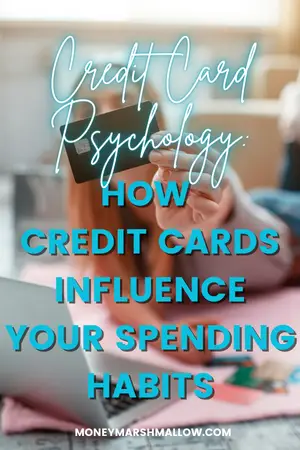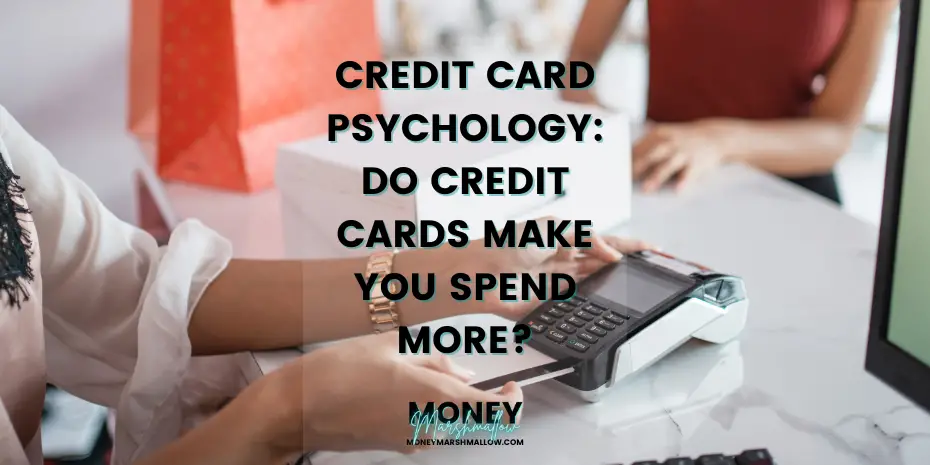In our busy lives, credit cards are now a crucial part of how we spend money. They’ve changed how we shop, whether in stores or online. But beneath the ease of swiping and tapping, there’s a psychological side to credit cards that affects how we spend. This article explores credit card psychology, revealing how these seemingly simple cards can influence our spending habits.
Does using a credit card make you spend more?
Using your credit card might sometimes make spending feel like handling “Monopoly money” instead of real currency. This sentiment is widespread, and research consistently indicates that people tend to spend more when making purchases with a credit card instead of using cash.
Not only are you more likely to buy something at a higher price with a credit card, but you are also likely to give bigger tips and make more impulse buys. This raises an interesting question: How and why do people spend more when using credit cards?
The psychology of credit card spending
Using a credit card can impact spending habits in several ways. Here are three key psychological factors at play:
1. The delayed pain of payment
Credit cards can make spending feel less painful by abstracting the transaction from the immediate exchange of cash. This psychological detachment can lead to a tendency to spend more, as the emotional impact of paying is diminished.
One reason for this effect is that credit cards allow us to defer the pain of payment, making it less tangible and present. When we pay with cash, the act of handing over physical money instantly registers the loss of a tangible asset. This direct exchange evokes a stronger emotional response and makes us more mindful of our spending.
In contrast, credit cards create a delay between the purchase and the actual payment. This time gap reduces the immediate emotional impact of spending, making it easier to overlook the financial implications. We may be more inclined to make impulse purchases or exceed our budgets when the consequences of our spending are not immediately felt.
2. The anticipation of pleasure
In 2021, a study in Scientific Reports revealed that credit cards stimulate spending by leveraging the brain’s reward networks, which can become more responsive through reinforcement and conditioning processes.
In other words, credit cards can create an anticipation of pleasure in the form of a purchase. It is a bit like the smell of baking cookies triggering your appetite. The same mechanism is also exploited in casinos, which use a variety of cues to increase appetites for gambling. This neural response could lead to spending habits and even shopping addictions.
3. The effect of credit card logos
Social scientists have also found that consumers have been conditioned by even the sight of credit card logos to want to spend more.
Research shows that just the sight of credit card logos can subtly influence spending habits, even when using cash. A scientific experiment explained this in the book Influence by Robert Cialdini; the mere presence of Visa and Mastercard logos increased cash sales by as much as 29%. Another study found that diners tipped more just by seeing a credit card logo on the tray that holds their restaurant bill.
This is because credit cards have become associated with emotions like excitement and anticipation, making spending more appealing and less rational. Moreover, exposure to credit card logos over time creates a sense of familiarity and comfort, increasing the likelihood of using them as the preferred payment method. This conditioning effect, similar to Pavlov’s dogs salivating at the sound of a bell, has been observed with credit cards for decades. Newer payment methods like mobile wallets may also tap into this conditioning, influencing spending decisions subconsciously.
Conclusion: Outsmarting credit card psychology
Credit cards can make people spend more money, give larger tips, and make more impulse purchases. Credit card psychology extends even to cash users as studies indicate that the mere presence of credit card logos can elevate spending tendencies, even when only cash is used.
But credit cards aren’t always bad. While subconscious psychological factors undoubtedly impact spending habits, understanding these patterns is an important step towards mindful financial management.
To navigate credit card usage responsibly, follow these tips:
Make a budget and track your spending: Figure out how much money you have coming in and going out each month, including credit card bills. Keep track of how much you’re spending to make sure you’re not spending more than you have.
Pay off your credit card balance in full each month: This way, you won’t have to pay interest, which is an extra cost that can make your purchases more expensive.
Foster financial awareness: Understand the psychological factors that influence your spending habits. Recognise how credit card companies use marketing tactics, emotional cues, and reward programs to incentivise spending. Stay informed about the financial implications of using credit cards, including interest rates, late fees, and potential hidden charges.
By following these tips, you can use credit cards without them controlling you. Credit cards can be a helpful tool for managing your finances and building credit, but only if you use them responsibly.

